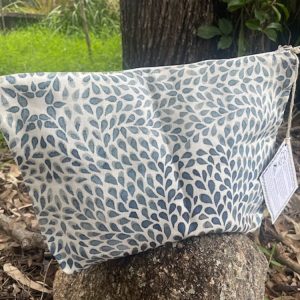Kathy Clark: Birdlife Southern Qld – Local Branch Convenor – Redlands and Brisbane Bayside
Birdlife completed its winter survey in August this year. The site is a haven for a big variety of birds as it offers a number of different types of habitats: wetlands, dams with surrounding reeds, fields with long grasses, bushes and trees as well as Bulimba Creek. Some newly recorded birds for the site were a Buff-banded Rail, a Pheasant Coucal and a Fan-tailed Cuckoo. The presence of these birds shows that continued work of revegetation is making this site suitable for many bird species.
One of the most plentiful bird on the site is the Tawny Grassbird. This smallish bird lets its presence be known, mainly in spring and summer, with a delightful varied song. It produces high pitched notes followed by a loud, slightly descending, reeling trill and finishes with loud, chuckling sounds. The rest of the year it can be fairly unobtrusive.
The Tawny Grassbird is found in coastal eastern and northern Australia. On this site it is found in long grasses and nearby shrubs. When perched and singing, it shows its rufous crown, has dark streaks on its tawny back and a long tail. It feeds mostly on insects and spiders.

The Buff-banded Rail is found in eastern Australian states as well as coastal northern and western Australia. This bird lives in wetlands with plenty of cover and is generally quite secretive. They feed on crustaceans, worms, insects and even frogs. It is a beautifully patterned bird with black and white bars on its chest and abdomen, a ginger breast-band and a rusty band running from the beak through the eye to the neck. Its back is fawn with dark markings and white spots.

A very large skulking cuckoo with a long trailing tail, the Pheasant Coucal, is found in areas with a dense understorey, often near water. We observed this magnificent bird when it flew clumsily from long grass into casuarina trees next to one of the dams. Unlike other cuckoos in Australia it builds its own nest raising its own young. It feeds on insects such as grasshoppers, mantids, and stink bugs, and vertebrates such as lizards.
The Ingham site has a number of waterbodies that are used by a variety of waterbirds including ducks, teal, grebes and egrets. The breeding male Chestnut Teal is a very striking duck with a beautiful glossy green head, red eyes and a bright chestnut chest . The female, as is the case with many bird species, is a plainer greyish-brown bird with dark brown patches. The female Chestnut Teal is very similar in appearance to the Grey Teal, which also occurs on the site.






